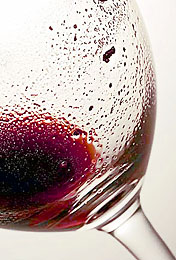 Have you ever wondered where all the sediment in the bottom of your fermenter comes from?
Have you ever wondered where all the sediment in the bottom of your fermenter comes from?
We’re not talking about the strands of pulp and other bits of the fruit, but that creamy, brown-looking stuff at the very bottom. Is it the broken-down solid remnants of the fruit? No, it even shows up when you make your wine from pulp-free concentrates! Could it be sugar that was added to the juice? No, the sediment’s there even when no sugar at all has been added to the must. So what is it? Where did it come from?
Here’s A Shocker. Remember back when you started the wine and you were adding all the wine making ingredients, just like the homemade wine instructions said to do? One of the ingredients that you added was in a little foil packet about 1-1/2 inches square–the wine yeast. That little packet is what produced all that sediment.
Once the yeast begin to ferment, they start multiplying by a process known as budding. In fact, in a 5 or 6 gallon batch of wine, the wine yeast will typically multiply themselves by about 100 to 150 times the little packet you added. This means you could have well over a pound of sediment just from the yeast alone. Wow, that’s freaky!
Well It Gets Freakier: Even if you add two packs of wine yeast you do not get two times the sediment. You will get more for sure, but only a minor, marginal amount. This is the nature of wine yeast. It propagates itself only to the level necessary to complete the fermentation.
This makes it near impossible to add too much wine yeast. Whether you add one, two or three packs to a 5 or 6 gallon batch of wine, the results are virtually the same.
So now you know…
———————————————————————————————————
Ed Kraus is a 3rd generation home brewer/winemaker and has been an owner of E. C. Kraus since 1999. He has been helping individuals make better wine and beer for over 25 years.

during fermentation when I add a cup of sugar there is a massive effervesence of CO2, is this from the yeast eating up the sugar so fast? What causes this?
Martin, what you are seeing is not a direct result of yeast activity. It is a spontaneous release of CO2 gas that has been saturated into the wine. When you agitate the wine the CO2 gas wants to release. This is no different than if you tired to stir sugar into a 2 liter of soda pop.